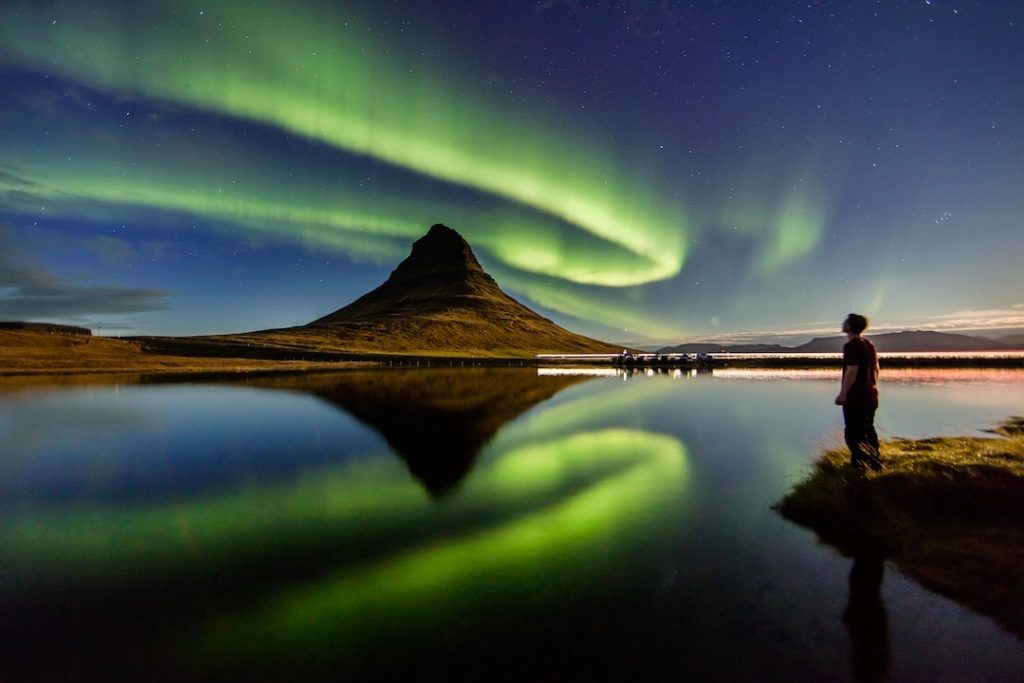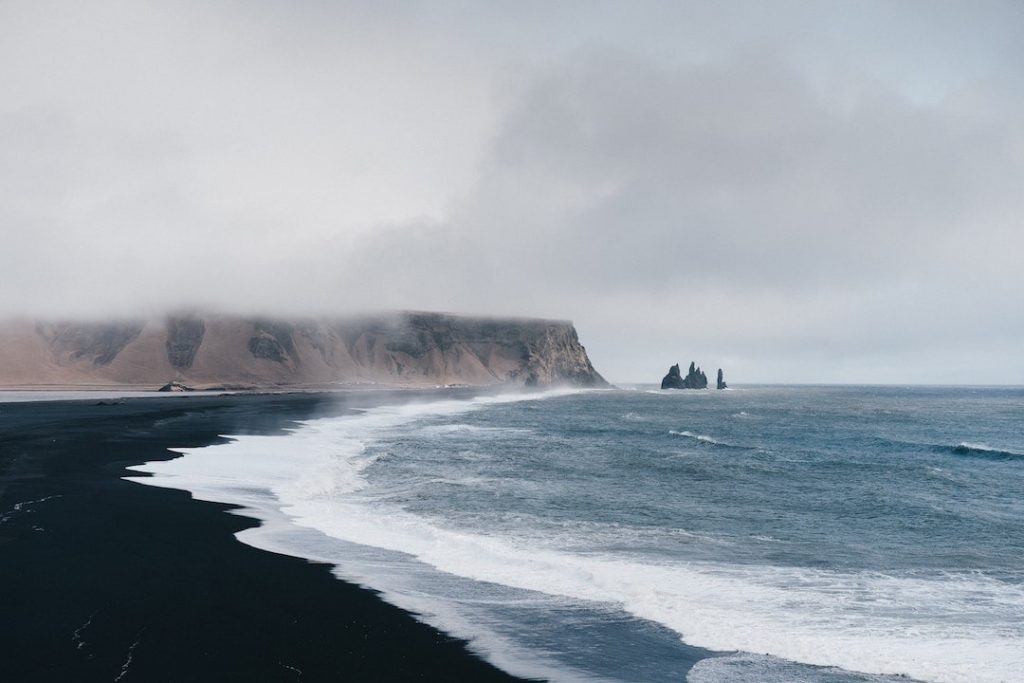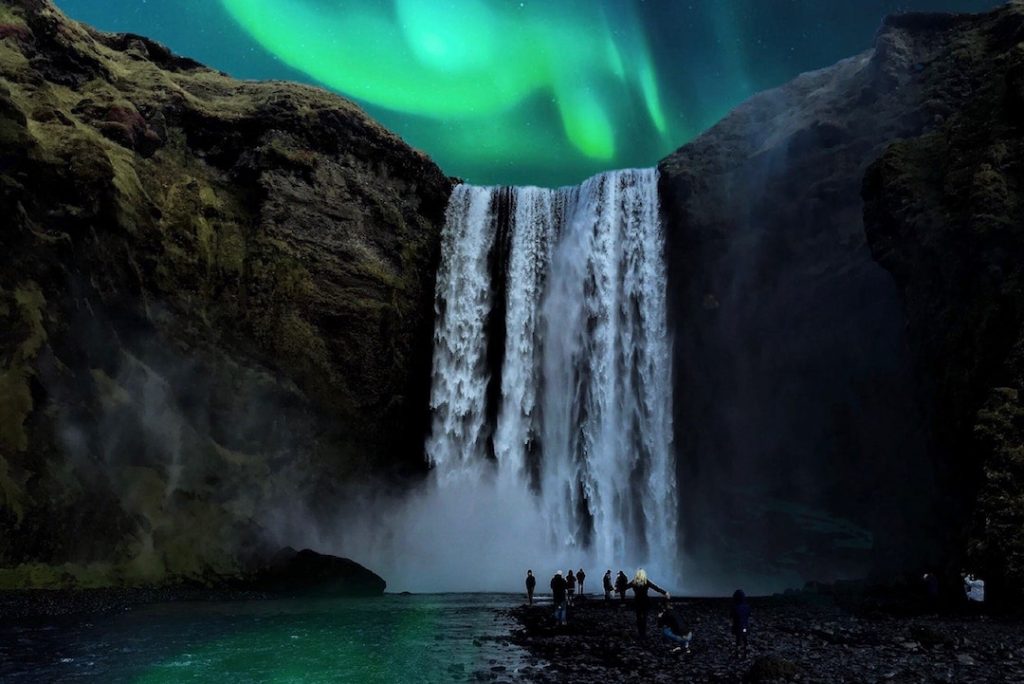Tourism in Iceland has increased dramatically in recent years, making it one of the most sought-after destinations for travelers, hikers, photographers, campers, and bikers alike. You’ve seen the photos and drone footage—it’s breathtaking! And thanks to its unique landscapes, beautiful waterfalls, and polar wildlife, it’s one country that will leave you speechless, no matter when you visit. That being said, the summer months are definitely peak season.
Iceland peak season
Pros
Starting in early May and spanning all the way to mid-September, Iceland will see over one million tourists. The summer months in Iceland have a lot to offer, from long days, moderate temperatures, and hundreds of open and affordable camping options. The roads are nearly completely accessible and whale watching and horseback riding tours are in full swing. However, there are downfalls to visiting during the summer months.
Cons
The cost of visiting during peak season tends to be much more expensive. Many rental companies and local tour operators increase prices by upwards of forty percent, putting a serious strain on any budget traveler. You’ll also be visiting with millions of other tourists, meaning there’s a slim to zero chance you’ll get Iceland’s famous landmarks all to yourself, putting a cramp in many photographer’s styles. There’s also a dramatically lower chance of seeing Iceland’s iconic northern lights, something many travelers don’t realize until after they arrive. On top of that, over-tourism has slowly begun to harm Iceland’s otherwise untouched and protected beauty; an aspect of tourism that will eventually cause severe damage to Iceland’s sensitive nature.
With all of the ups and downs of Iceland’s summer months, some travelers have begun opting for a trip to Iceland during the off-season: anytime between November and March. This season is also known as Winter in Iceland.

Iceland off-season
For anyone considering visiting Iceland in the winter, you’re sure to have an amazing time, but there are a few things to consider before packing the snowshoes and booking your tickets.
Pros
- Iceland is a lot more affordable during the winter months, simply because there are fewer people visiting. Flights, tours, accommodations, and rentals are all significantly lower in cost, making it the perfect time to visit for anyone looking to travel on a shoestring budget.
- It’s also going to be a lot less crowded, which is something a lot of people are beginning to prefer as they explore new countries. Your photos will be undeniably beautiful, and it will be a lot easier to get those stunning landscape shots without dozens of other travelers in the background.
- Winters in Iceland are beautiful: that’s a fact. The snow makes for a completely unique experience, and many travelers are actually more interested in the country once it’s been blanketed in snow. The winter wonderland vibes are something that can only be achieved by visiting in the off-season.
- You’re also much, much more likely to see the elusive northern lights in the off season. While it is possible to see them in the summer, it’s much less likely. Each year, many tourists make it their priority to see the lights, and therefore opt to visit in the winter.
- For many photographers, Iceland’s winter is the ideal change of scenery they’re looking for. While everyone else is flocking to warm, beachy destinations, you’ll find yourself in what feels like the North Pole. It’s not the most typical winter holiday, but if you’re looking for something that’s totally different and off the beaten path, this is it!
- Conservationists tend to prefer trips to Iceland in the winter, as it does reduce the number of travelers visiting in peak season. While it’s fantastic that Iceland’s beauty has become something everyone wants to experience, it’s every traveler’s duty to protect the places they visit. For many, visiting in the winter is their way of contributing to the issue of over-tourism in Iceland.

Cons
- Visiting Iceland in the winter will inevitably lead to shorter days. Depending on when you visit, daylight can be as little as just four to five hours. While it’s a turn off to some, it just means your days need to be planned more thoroughly to ensure you see what you want while there’s still daylight.
- During the winter, the roads in Iceland become very dangerous, especially to inexperienced drivers. In fact, some areas of the island are completely inaccessible. That being said, if you go with a reputable and experienced tour company, you can avoid the worry of winter roads altogether. It’s a much safer and stress-free option for winter visitors.
- Some tour operators, like whale watching charters, glacier hikes, and horse riding, close their doors once peak season is over. But that’s not the case universally. In fact, tons of operators are still open and ready for business. It just means you’ll have to call ahead to make arrangements and see if the company is operating ahead of time. Once again, by traveling with a tour group, you can avoid this hassle.
As you can see, the upsides to visiting Iceland in the winter far outweigh the few downsides. And most of the time, with the right planning, the downsides can be avoided altogether.

Tips for visiting Iceland off-season
To make sure you’re able to make the most of your trip, here are a few helpful tips to help you prepare for a winter-wonderland tour of Iceland.
- Pack tons of layers: Iceland gets cold in the winter, so prepare and bring a ton of clothes you can layer up. Base layers, sweaters, scarfs, a winter coat, and thick socks are all an absolute must!
- Bring a tripod: If you do end up seeing the northern lights (which you likely will), you’ll need a tripod if you want to photograph the magical experience successfully. Check out this blog for vital tips for getting the shot with your camera or smartphone.
- Invest in good mittens: Your hands are the most likely to get cold, and cold hands can ruin your day. Make sure to invest in a really nice pair of mittens so you don’t fall victim to freezing cold hands that put a damper on your travels.
- Bring extra socks: Like your hands, your feet are also likely to catch a chill, especially since you’ll be exploring in the snow. Buy a few pairs of thick wool socks to protect your feet and toes from getting cold.
- Travel with a tour company: The stresses of visiting Iceland in the winter can be completely avoided by traveling with a tour company. Dozens continue to operate in the winter months and your safety and experience is always their top priority. Booking an Iceland tour will help you make the most of your trip and ensure everything runs smoothly (and safely).

- Follow the rules: Around Iceland, there are signs and warnings posted to help keep you safe. If a sign says don’t pass a certain point, listen to it! Iceland uses a ton of search and rescue resources on tourists each year, so try not to be one of them.
- Respect the land: As a traveler, respecting the natural landscape and culture of a country should be of utmost importance. If we don’t protect Iceland while we travel, it won’t remain beautiful for future travelers. Always clean up after yourself, don’t go offroading, and leave things just the way you found them.
- Plan your days: Because you’re going to have such few hours of daylight, you’re going to want to plan your day-trips pretty tightly. Otherwise, you run the risk of not seeing everything you wanted to.
- Check the roads the night and morning before travel: It’s really important for your own safety to check the road conditions before you leave for the day. Check out the Icelandic Road and Coastal Administration’s website for more information.
Visiting Iceland in the winter is an experience many Icelandic locals say is a must. The diversity and unique twist on already beautiful landscapes is something every traveler can fall in love with. Not to mention fewer crowds and increased odds of seeing the northern lights are reason enough. Check out the tours TourRadar has in Iceland for the winter months and get ready for the ultimate winter wonderland experience.


